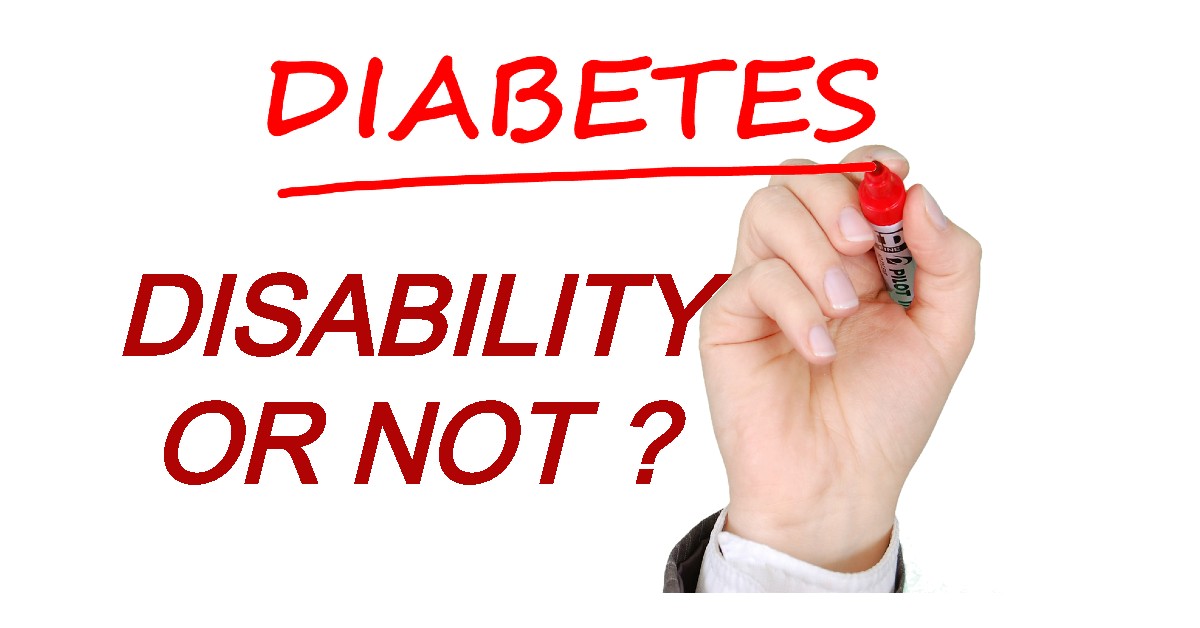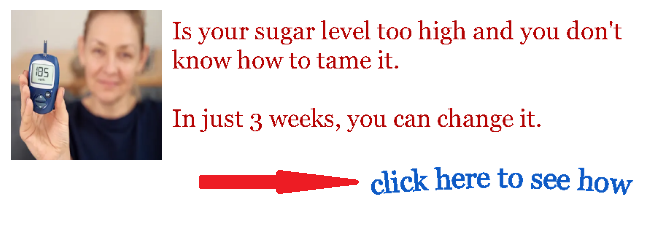Is diabetes considered a disability? A straightforward question is yes. The law considers both Types I and II diabetes as a disability. However, it is essential to note that people with diabetes are capable of living every day life. They can keep jobs, engage in business and sports, and have goals like others. Hence, despite benefiting from disability protection, people with diabetes can enjoy activities that enable them to meet their goals.
Diabetes qualifies as a disability due to its complexity, which influences various body parts. It is possible that the arising complications can result in physical disabilities. For instance, when the ailment exceeds, amputation is a possible repercussion. However, even without physical disabilities, diabetes results in unseen disability. Unseen disabilities refer to impairments that cannot be identified easily. Human beings can control the unseen symptoms privately. The unseen disabilities can result in using assistive devices like hearing aids, wheelchairs, and glasses. The type of disabilities related to diabetes is less severe than those that manifest visibly.
As earlier stated, American law recognizes diabetes as a disability. Different acts of the law acknowledge diabetes as a disability. The 1964 Civil Rights Act prohibits discrimination against people based on numerous factors like gender, color, race, and religion. Additionally, the 2021 Equality Act introduced some amendments to the law, prohibiting discrimination based on disability or age. The SSI outlines diabetes as a disability, which protects people with diabetes from discrimination.
Measures to manage diabetes disability at school
School-going children are prone to diabetes, affecting their quality of life and productivity while learning. Such an outcome would be discriminative since it denies them equal opportunities with the rest. The Safe School program enables diabetic learners to enjoy the learning experience like the rest.
Schools have measures in place to manage diabetes disability and improve the learning experience for students. Firstly, every school must have diabetes-trained staff that consistently monitor sugar levels and help administer insulin. Since children live an active lifestyle, schools must have trained staff to accompany children during their co-curricular activities. Finally, schools should provide infrastructures that enable children to self-manage their condition whenever needed. The recommended control measures enhance the quality of life among children with unseen disabilities, subjecting them to discrimination.
Diabetes disability in the workplace
Employees with diabetes are subject to discrimination at the workplace. The aspect subjects them to discrimination that would lead to them being unfairly fired or failure to employ. Due to diabetes, the victims might fail to be available full-time or lose their productivity. Since the law protects people from discrimination, an employer is subject to a legal process for discriminatory firing. The employer must ensure to provide all resources needed by diabetic employees to execute their roles and responsibilities. The workplace environment should also be conducive for employees to practice diabetes management at any time.
Diabetes disability and law enforcement
Diabetic disability does not exempt the victims from the rule of law. As a result, any person with diabetes who breaks the law will have to comply with the law. However, it is essential to ensure that people with diabetes serving their jail terms have access to care. Inadequate care for diabetics can lead to complications such as kidney failure, limbs, and blindness. The incarceration centers should have trained staff that can identify the emergencies associated with diabetes disability. As a result, it will be possible to give urgent medical attention to diabetics. Inmates with diabetes should be able to access care whenever needed to sustain a healthy lifestyle. Failure to treat diabetes as a disability in incarceration centers will be a form of discrimination against diabetic inmates.
Benefits for diabetes disability patients
Several governments in developed countries acknowledge the burden that comes with diabetes. As a result, the governments support programs to enhance the well-being of people with diabetes. In the U.S., people with diabetes can qualify for Social Security Disability Insurance (SSDI) or Social Security Insurance (SSI). However, qualifying for the benefits of SSDI and SSI is not automatic for every person with diabetes. Individuals qualify for SSDI and SSI if their condition limits them from going to work for a year. Additionally, anyone diagnosed with a condition likely to cause death within a year also qualifies.
Anyone that meets the above requirements should apply for the benefits. The patient ought to acquire a report from their doctor that outlines what they are capable of achieving and their limitations. The social security officers are in charge of verifying the report and information given to determine whether one enjoys the perks. The amount received is capped such that no people with diabetes can exceed the limit. However, the amount changes annually depending on the state government and economic prowess. A diabetic patient can appeal the first determination if denied the diabetes disability perks.
It is important to note that a person with diabetes can qualify for SSDI and fail SSI. Qualifying for SSDI requires that the person with diabetes should prove to have actively worked for five years in the past ten years. SSI does not require past work records. However, SSI evaluates the household income level. Successful applicants have a household income below $2,000.
Some impairments among diabetes patients that qualify them for SSDI perks include neuropathy, acidosis, and diabetic retinopathy, as explained in this video. Neuropathy is a health condition that influences the nervous system due to sustained disturbances. Victims find it challenging to maintain movement, such as walking. On the other hand, acidosis refers to an increase in acidity in the body fluid. Finally, diabetic retinopathy results in destroyed blood vessels, which cause blindness. Diabetes patients seeking to benefit from SSID should check the blue book to ensure that they meet all the qualifying requirements.
Other countries like the U.K. provide more intensive packages for diabetes disability. The government exempts people with diabetes from paying for their prescriptions. However, the patients must apply for an exemption certificate that depends on the doctor’s report. People in Northern Ireland, Wales, and Scotland enjoy prescription exemptions for insulin. The U.K. government also provides a Disability Living Allowance for people with diabetes. Both adults and children with diabetes are eligible since the government determined they have more needs.
Another perk is the U.K. for people with diabetes is that they qualify for an attendance allowance. The amount helps the patients facilitate other household activities like washing. The government further gives some incentives to the caregivers taking care of diabetes patients. The efforts made are favorable since they help ensure that people with diabetes can live quality lives. A lot of awareness ought to be created among members of society to make them understand diabetes and offer better care.
Diabetes Symbol
The common diabetes symbol is a blue circle, which the IDF established in 2006 to give people with diabetes a collective identity. Diabetics have not been able to identify themselves with diabetes disability in public places, schools, and workplaces using the blue circle logo. The diabetes symbol helps create awareness surrounding the issues and challenges faced by diabetics. The symbol intends to capture the attention of the members of public on issues to do with diabetes. An informed public will make it easy to show support to the rest of the world.
A diabetes awareness ribbon refers to a short colored piece of ribbon pleated into a loop. The awareness ribbons acts as diabetes symbol since they make a statement to surrounding community of support for an issue. Using the diabetes awareness ribbons plays a key role in acknowledging the unseen disabilities resulting from the condition. Besides the blue circle logo, multiple other diabetes awareness ribbons act as diabetes symbols. Different organizations have created ribbons in support of expanding diabetes awareness. The awareness ribbons are more common in the U.S, U.K, Australia, and Canada.
People with diabetes should consider wearing awareness ribbons to symbolize that they endure unseen disabilities. It will make it easy to identify the type of care to administer to them in an emergency. The law is protective against discrimination among people with diabetes, which should improve their confidence when wearing ribbons. Identifying publicly as a person with diabetes using the diabetes symbol will eradicate the stigma toward the condition.
Diabetes doctor near me
Diabetes identifies as a chronic condition since there is no known cure. However, with proper management practices, diabetics can live a quality life. Regular appointments with a doctor is among the recommended practices for diabetes patients. A person with diabetes must know of a “diabetes doctor near me” at any time. Regular check-ups for people with diabetes enable them to maintain the recommended blood sugar levels. As a result, the measure helps reduce the threat of complications associated with diabetes.
Even though people with diabetes are not immunocompromised, they are susceptible to acquiring other infections. High blood sugar levels have the potential to weaken the immune system such that they easily fall sick. Identifying a “diabetes doctor near me” enables people with diabetes to have their health checked before it gets severe.



